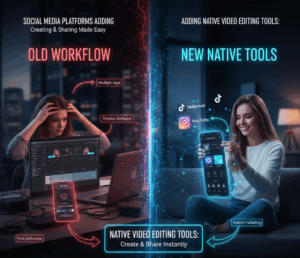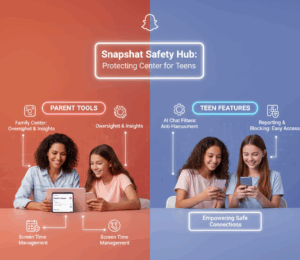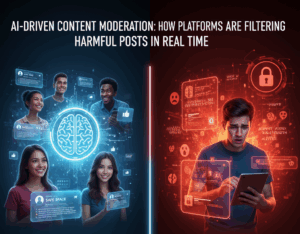Meta’s New Push for VR and AR Integration in Social Media

Meta’s New Push for VR and AR Integration in Social Media
A Strategic Shift Toward Immersive Experiences
Meta has been slowly reinventing itself from a standard social media firm into a pioneer of immersive technology. Its increasing emphasis on virtual reality (VR) and augmented reality (AR) implies a stronger integration of these technologies into its main platforms. Rather than confining VR and AR to niche games or experimental uses, Meta seeks to incorporate them into regular digital interactions, transforming how people connect, work, and socialize.
Why VR and AR Matter for Social Media
- Enhanced Presence: VR offers a sensation of “being there” in digital surroundings, making online interactions more intimate.
- Blended Reality: AR layers digital material over the real world, converting regular locations into engaging experiences.
- Content Evolution: Short videos and static postings are giving way to immersive storytelling, enabling artists and companies to engage audiences in new dimensions.
Meta’s Investment in VR Hardware
Meta continues to develop its Quest line of headsets, seeking to make VR more inexpensive and accessible. The company’s long-term ambition is to compress hardware into lighter, more comfortable, and ultimately glasses-like gadgets. These will function as entrances to both VR worlds and AR-enhanced real-world experiences.
AR Through Everyday Devices
While complete AR glasses are still in development, Meta has started pushing out AR functionality via mobile applications and smart devices. Filters, effects, and interactive 3D features on Instagram and Facebook highlight how AR is already incorporated into popular platforms, easing users into more complicated immersive technologies.
The Role of Horizon Worlds and Metaverse Platforms
Horizon Worlds is Meta’s greatest gamble on social VR. It lets users to connect in virtual locations, attend events, and establish communities. Meta is marketing it not only as a game-like environment but as a social extension of Facebook and Instagram, where digital meetings and experiences replace conventional surfing and posting.
Integration With Instagram and Facebook
Meta has been experimenting with AR shopping experiences, 3D product try-ons, and better filters. These connections serve two purposes: to make AR relevant in everyday activities like shopping, and to standardize immersive interactions before VR adoption scales.
Opportunities for Creators and Brands
- Immersive Advertising: Brands may present items in 3D or via virtual stores.
- Virtual Events: Musicians, lecturers, and influencers may hold meetings within VR settings.
- Interactive Content: AR filters and effects enable new methods to engage viewers, particularly younger users.
Challenges Meta Faces
Hardware Costs: Despite advancements, VR headsets remain an expense compared to smartphones.
- Adoption Rates: Many users still consider VR as gaming-centric rather than a social tool.
- Privacy Concerns: Tracking movement, emotions, and biometric data raises additional worries regarding data protection.
- Competition: Companies like Apple and Google are establishing their own AR and VR platforms.
The Role of AI in VR and AR Integration
Meta is also employing AI to build lifelike avatars, increase voice-to-text communication, and customize digital settings. AI-powered moderation will play a vital role in making virtual social spaces safe and inclusive.
How This Shapes the Future of Social Media
If Meta’s concept works, social media might grow from flat displays into immersive worlds where friends, communities, and businesses engage in shared digital places. Likes, comments, and shares may someday give way to gestures, vocal interactions, and real-time cooperation in 3D locations.
The Long-Term Vision
Meta’s long-term ambition is to build a seamless integration of VR and AR across business, entertainment, and social networking. This idea resonates with the notion of the metaverse, a permanent, shared digital world where physical and virtual realities blend.
The Consumer Question
The important issue remains whether users will welcome this transformation. For many, social media is treasured for its ease and accessibility. Meta must establish that immersive experiences are not just interesting but also functional in daily life.
A Bold Experiment in Social Connectivity
Meta’s quest for VR and AR integration in social media is a significant experiment in the future of online engagement. By merging immersive technology with current platforms, the firm is seeking to reimagine what it means to connect in the digital era. Success will rely on user uptake, device accessibility, and Meta’s ability to combine innovation with trust and usability.



